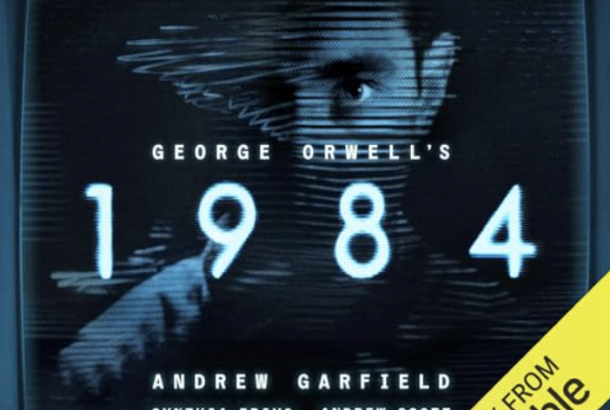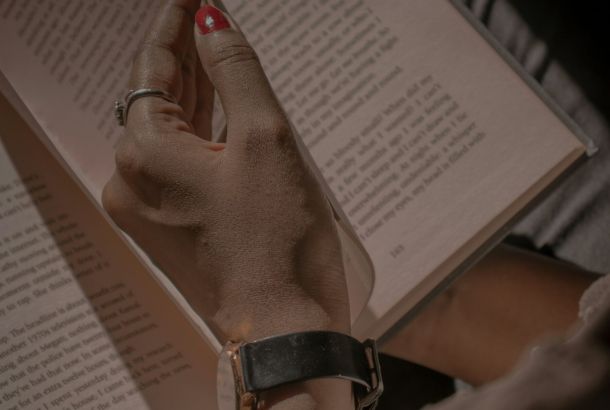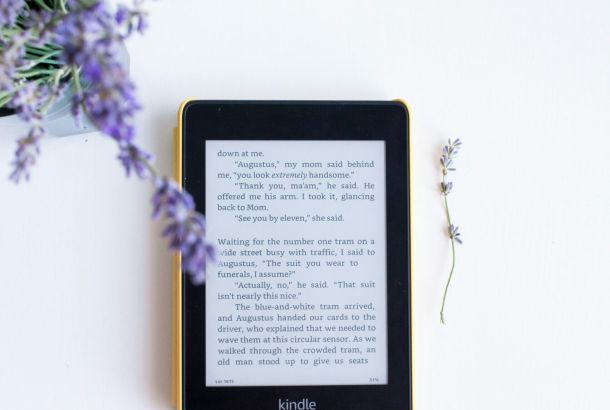How to get over a reading slump: 5 tips and 5 books
By Maisie Scott, banamustafa and Aileen Loftus

Books have the potential to be the perfect escapism from everyday life. However, reading can feel like a draining task. Everyone experiences a reading slump from time to time due to the demands of work, life, and the endless lockdowns.
The books section have collaborated to share our tips on how to get over a reading slump. We’ve also included the books that motivated us to get back into reading following our own hiatuses.
5 tips to get over a reading slump
- Listen to audio books or podcasts. Reading a physical copy of a book can be draining after a long day of work or study. I think that audio books can be the perfect solution for tired eyes. There are so many books now available on services such as YouTube and Audible. You can listen to books narrated by famous actors as well including Matthew McConaughey who narrates his novel Greenlights.
- Ask a mate or a family member for a recommendation, or borrow a book from them. I think this can be motivating for people who are trying to get over a reading slump. Following a recommendation makes reading a shared experience. Also, you can dissect your thoughts on the books together afterwards. I would also recommend borrowing a copy of a book because this helps to create more sustainable reading habits.
- Reread your favourite book. By picking up your favourite book again, you can remind yourself of how much you enjoy reading. The draining element of reading is quickly forgotten when you’re sitting down with your favourite page-turner. I also find that it helps me get back into the groove of reading.
- Three chapter rule. I often used to find myself trying to force a book to be good, and this was one of the biggest causes for my reading slumps. My solution to this was to employ a three chapter rule with all of the books that I pick up. If I am still not enjoying it three chapters in then I simply put the book down. Sometimes I will pick up the book again months after I first bought it. Mainly because my taste would have evolved or I am simply in the mood for that kind of book.
- Experiment and find your niche. Don’t be afraid to try unconventional or new books (while employing the three chapter rule). This method has worked really well for me. It has kept me excited about trying new genres and exploring the literary field in all areas. I found my niche around two years ago. This has helped, as whenever I find that I am in the middle of a slump, I resort back to what I know I will enjoy.
5 books to get over a reading slump
1. Maisie: The Vegetarian by Han Kang
The Vegetarian is a subversive story which navigates the deterioration of a marriage, vegetarianism and an eating disorder. To be honest, it’s important to flag up at the beginning of this review that the novel does require a CW because of the discussion of food and disordered eating.
Han Kang’s novel has achieved huge critical acclaim as it was awarded the 2016 Man Booker International Prize. I read the novel last summer after having a substantial reading slump. I sat in the sun reading the book and became so absorbed by it that I read it all in one go.
In the novel, Yeong-Hye is compelled to stop eating meat following a disturbing dream. Kan’s protagonist switches to vegetarianism and during this transition her marriage rapidly deteriorates. The breakdown of the relationship runs in parallel with the development of Yeong-Hye’s restrictive vegetarian diet.
Yeong-Hye’s new lifestyle creates severe family tensions. The novel represents the strained relationships and the intense pressures Yeong-Hye is subjected to by her family.
The novel centralises Yeong-Hye’s perspective without entering her narrative point-of-view. The Vegetarian is split into three separate sections of narrative, each of which includes the perspective of a different family member. To begin with, the story is narrated by Mr Cheong (Yeong-Hye’s husband). The second section is narrated by Yeong-Hye’s unnamed brother-in-law, and the final section is narrated by Yeong-Hye’s sister In-Hye.
Yeong-Hye’s perspective is omitted yet despite this she remains the focus of the story. The Vegetarian explores the abuse and misogyny that has been inflicted upon Yeong-Hye by men without ever sharing her thoughts. In fact, Yeong-Hye is seen through the gaze of two men in the narrative which potentially restricts her own agency once again.
The Vegetarian has a psychoanalytic dimension because of the significance of Yeong-Hye’s dreams, the haunting imagery and the development of her eating disorder. Kan’s novel is deeply disturbing on a psychological level and it stays with you long after you finish reading it.
2. Bana: Bluets by Maggie Nelson
Bluets is an unapologetic and lyrical meditation on the colour blue explored through depression, desire, the ecstasy of new love and the devastation of heartbreak. This is one of those books that is quite hard to pin down. It is not exactly clear whether it is a memoir, an essay, or an extended poem. Perhaps, it is all of those things. It is split up into 240 short prose-poems, making it a quick read. These prose-poems were written across three years documenting Nelson’s journey through grief and recovery as she cares for her quadriplegic friend while also grappling with heartbreak.
Nelson’s style is evocative. Despite the book’s short length, Nelson discusses so much through her musings of the colour blue. She explores the themes of love, loss, sensuality and sexuality in a very honest and realistic way. This makes her experiences, while unique, extremely human and thus, extremely relatable.
I found this book to be a quick, meditative read. It is always interesting to witness a reflection of life with candour, especially through a new, unusual lens: the colour blue.
3. Aileen: Circe by Madeline Miller
Sometimes reading books for university can create a bit of a ‘fun book’ reading slump for me. I get so caught up in reading to deadlines and not getting to choose what to read that when I do get some free time, I don’t always pick up a book straight away. Circe by Madeline Miller got me over one such slump.
It came highly recommended by a friend, and I thought I would give it a try, even though I really didn’t think it would be my thing. It was definitely something different for me.
Miller deftly weaves together myth, fantasy and fiction, by giving Circe, daughter of a naiad and Helios the sun god, her own narrative. Miller retells Circe’s story in a wonderfully feminist way, that gives Circe independence, power and emotional depth, all of which is missing when Odysseus briefly encounters her in Book 10 of The Odyssey.
It helped me to link Greek myths and Gods together, and place them in a more tangible context, through Circe’s own family tree. Circe is gripping and fast moving, and the island, Aiaia, to which Circe is banished, became vividly real to me.
The best thing was being able to chat with my friend about it during and afterwards, so Circe definitely brought a new lease of life to my reading.
4. Maisie: An American Marriage by Tayari Jones
During the first lockdown, I would go through waves of being hyper-interested in reading then losing all interest. I read An American Marriage by Tayari Jones at the same time as one of my close friends. I really enjoyed sharing my thoughts on Jones’ novel with my friend and chatting about it afterwards. Reading is a very individual activity, but making it a shared or social experience can be really rewarding.
An American Marriage is a romance and an anti-love story at the same time. Jones focuses on Celestial and Roy’s romance and later marriage. However, their relationship is put to the test when Roy is wrongly incarcerated for twelve years for a crime he didn’t commit.
The novel exposes how racial injustices in the US legal system exert pressure on individuals and relationships. Celestial remains supportive of Roy throughout the experience and Jones includes their letter correspondences to Roy’s prison address. Over time the unspoken tensions build up between the two and that is reflected in the letters Jones includes.
Roy and Celestial’s lives both get placed on hold due to his incarceration impacting both their qualities of life. Eventually cracks begin to show in the relationship which cannot be healed even after Roy is released from jail.
Throughout the novel Jones creates empathy for both Celestial and Roy. Both characters became victims of a deeply racist legal system. Jones maps how the couple fell in love, but also how they fell out of it which added a realism to their tragic romance. I would recommend checking out Bill Gates’ review on his blog for further insight into the novel.
5. Bana: Devotion by Patti Smith
This book is another one that is hard to pin down. I would argue that it is partially a fiction, a memoir, and perhaps also part travel writing. Implicitly, this is a book about Smith’s fascinations and how they fuel her creative process. It is a short book with three sections, “How the Mind Works”, “Devotion”, and “A Dream is not a Dream.”
In the first part, Smith documents her time in Paris meeting with her French publisher. She writes about her Parisian routine and the small nuances of a life there. On a train trip, she is suddenly inspired by her last few days in Paris. She immediately begins to write a short story.
This brings you to the second part: a short story of obsession. She writes of a young Estonian girl (whose description matches a young Patti Smith) who lives for her art: ice skating. In this part of the book, Smith explores an obsessive, beautiful, and dangerous account of devotion. She ties in several elements of this story to her last days in Paris. It becomes apparent how she incorporates details from casual daily encounters into a story, giving the reader an exclusive ‘in’ on her creative process.
The last part of the book details her visit to Albert Camus’ house. During her visit, she stays in Camus’ room and kind of experiences a ‘day in the life of Albert Camus’. She is privileged to look through his last manuscript, and this deepens her devotion to her craft, inspiring her to write more.
I think that it is very special and intriguing to be able to bear witness to an artist’s creative process. This short, atmospheric page-turner gave me this exact experience. I would also recommend reading Just Kids by Patti Smith. Smith’s writing is not worth missing out on.
We hope that our list motivates and inspires some new reading habits. Please get in contact via social media if you have any further tips on how to get over a reading slump.







